Beef Rendang is a popular curry dish served in Indonesia. It is made by slow cooking beef in coconut milk and flavoring with lemongrass, cinnamon, chilies, and more. The flavor profile of this dish is complex and it is one of the world’s favorite foods! Follow the instructions to make it at home.
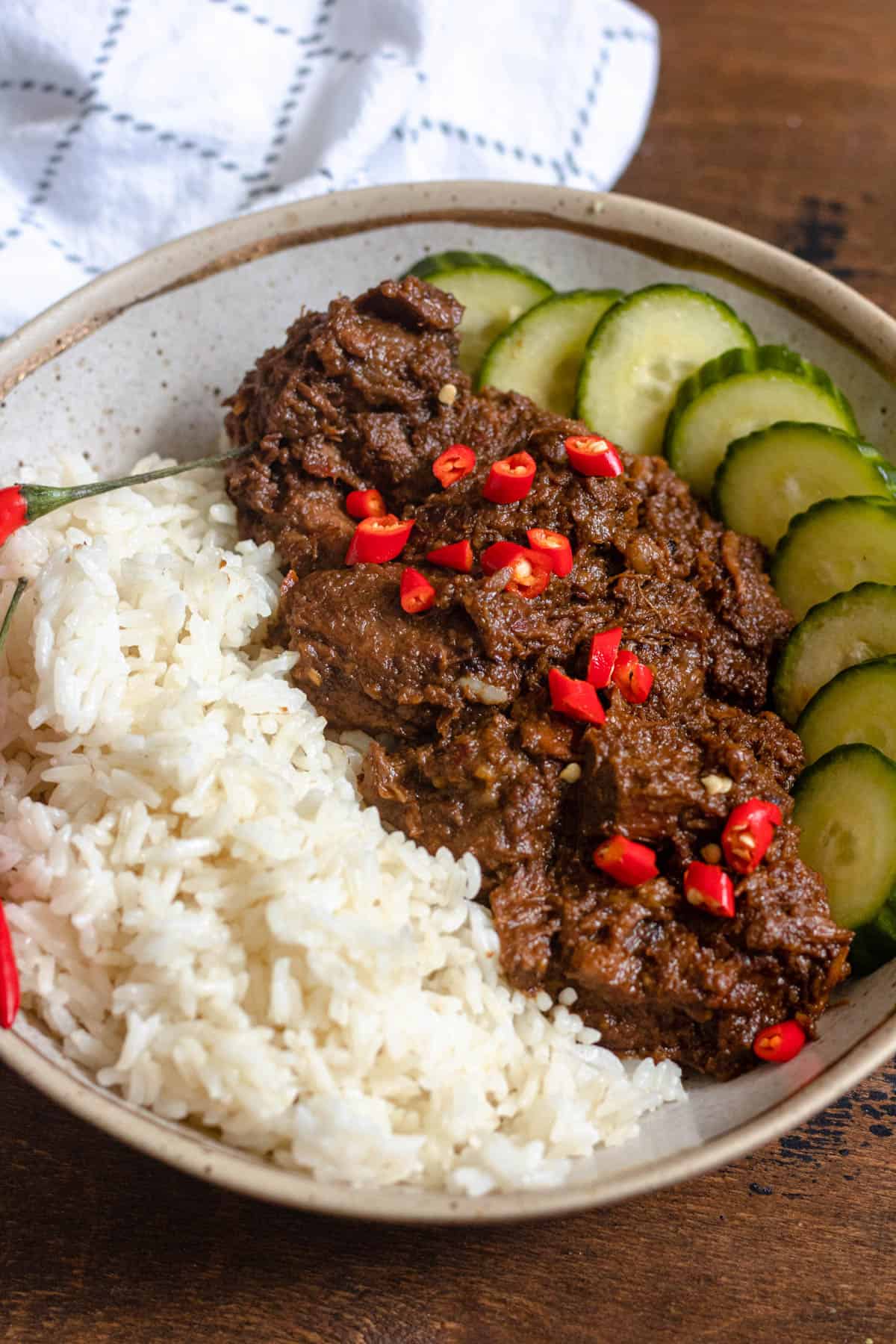
Hello Reader! I try my hardest to research recipes as best as I can before posting to ensure I am representing each culture correctly. If this recipe is from your country and I have made a mistake or you have suggestions for how to make it more authentic, I would love to hear! Please leave a comment below letting me know what should be different, and I will rework the recipe. It is always my intention to pay homage and respect to each cultural dish that I cook. Thanks for reading!
Recipe Origins
Beef Rendang is one of the most popular dishes in Indonesia, and for good reason! It is considered a “dry” beef curry because the liquid is cooked out of the sauce until all of the flavors solidify and attach to the beef.
When you hear dry curry, though, don’t be scared away! Though this is not a saucy dish, this Indonesian Beef Stew is so tender and very flavorful. This dish has a long cooking time which leads to ultra flavorful beef. In addition to that, there are plenty of unique and fresh ingredients that contribute to the success of this delicious food.
In fact, Beef Rendang is loved by so many that it topped the list (that’s right, #1!) of CNN’s World’s 50 Best Foods in 2011. It is a great dish to make for a special occasion or even as a comfort food diner. Try making this dish at home to see what all the fuss is about!
Why Make this Recipe
- “Travel” to Indonesia: If you want to experience the flavors and tastes of Indonesia, this is a great way to do so!
- New Flavors: I was able to experiment with so many new ingredients when making this recipe! It was fun to use new ingredients and experiment with exciting flavor profiles.
- So Tender: The beef in this recipe is incredibly tender and full of such delicious flavors. You are going to love eating this dish at home!
What Do I Need to Make this Recipe?
Ingredients
Here is a visual overview of the ingredients in the recipe. Scroll down to the recipe at the bottom for quantities.
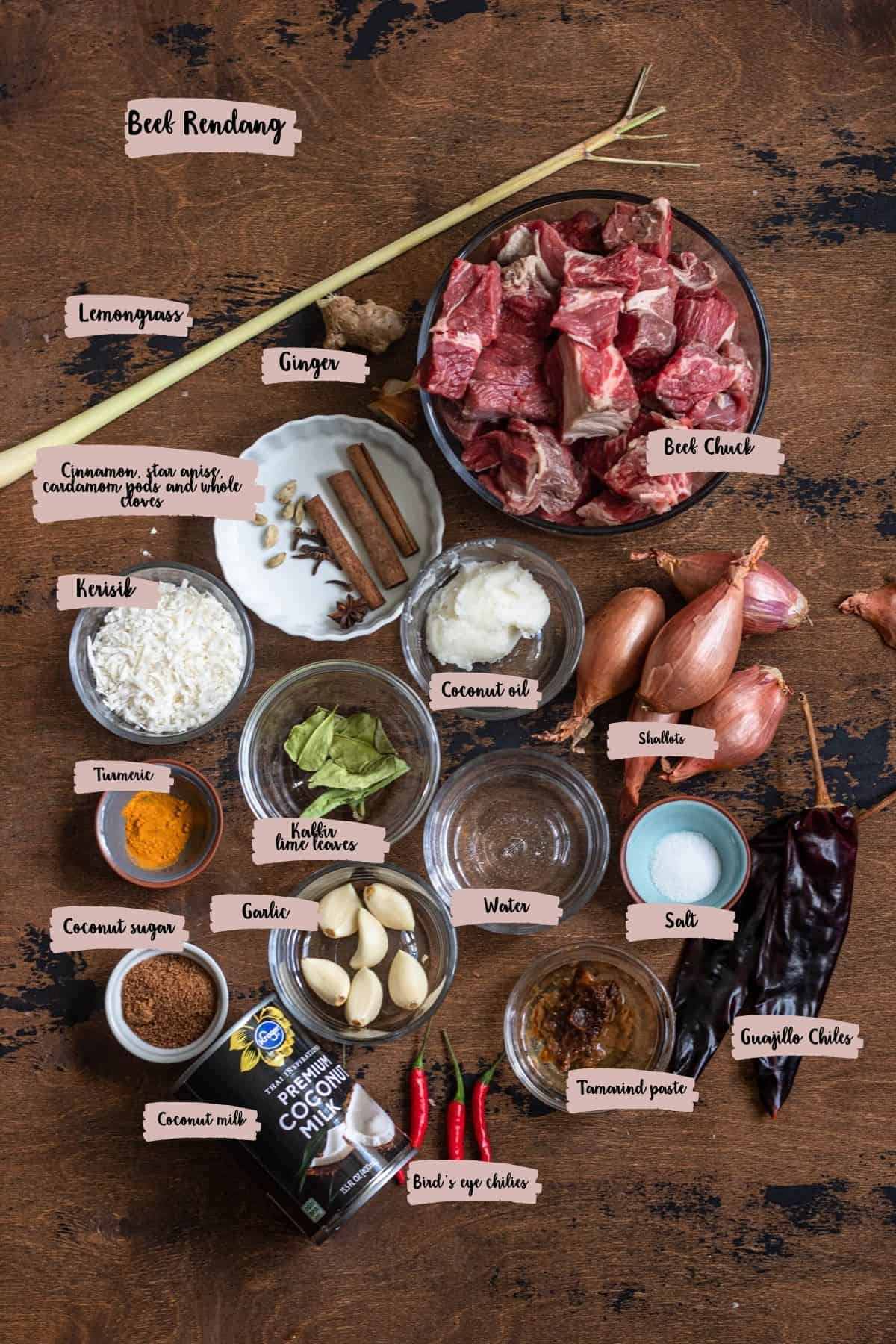
- Guajillo Chilies: Use fresh chilies or frozen ones if possible. If necessary, you can use dried chilies that you can cut open and have the seeds removed. I like to soak my dried chiles in hot water so that the flesh can soften and grind up easily. You can buy these chilies online here.
- Bird’s Eye Chilies: A good alternatives is Red Thai Chilies. You can use Cayenne peppers as a last result, though it will change the type of spiciness in the recipe.
- Galangal Root: Galangal root looks like ginger, and tastes vaguely citrus-y. You can buy this at a local Asian grocery store. Slice the Galangal root into ¼ inch slices. This will make the fibers shorter and removes the chance of long fibers that are sometimes hairy in texture.
- Turmeric Powder: You can also use fresh turmeric root if you’d prefer. Some Beef Rendang recipes even call for turmeric leaves.
- Lemongrass: Lemongrass is a great aromatic that will add a lot of flavor to your dish. If you are using fresh lemongrass stalks, follow these instructions on how to properly clean and use the ingredient. You can also bash the lemongrass root (example in this video) to release even better flavor.
- Beef: You can use any kind of tender beef. I chose to use beef chuck, but short ribs are also a popular choice.
- Coconut Milk: Try using high quality coconut milk. If the coconut cream has separated from the coconut water in the can, blend it together well and use both.
- Coconut Sugar: You can replace this with palm sugar or brown sugar if you cannot find coconut sugar.
- Tamarind Paste: If you cannot find tamarind paste, you can also combine tamarind pulp with water to get the same effect. You can buy Tamarind Paste online or at your local Asian market. Want to know more about this ingredient before buying? Read What Does Tamarind Taste Like for more.
- Kaffir Lime Leaves: Kaffir lime leaves are used frequently in Thai and Indonesian cooking, as they deliver a strong Lime taste. These can be difficult to find in stores, but you can purchase them online easily. If you cannot find them, you can also use lime zest + lime juice to replace the flavor.
- Kerisik: Kerisik is a paste made of ground up, toasted coconut. It is difficult to find in stores and online while in America, so you will likely need to make it yourself. To do so, you will need 1 cup of ground up coconut. If using fresh coconut, that is the only ingredient you will need. If using pre-packaged shredded (unsweetened) coconut, you will also need a few teaspoons of coconut oil.
Tools
- Food Processor: To make the spice blend
- Large Dutch Oven: With a lid
- Small Pan: To toast the coconut if making the kerisik from scratch
How to Make this Recipe
Step 1: Make and Cook the Spice Paste
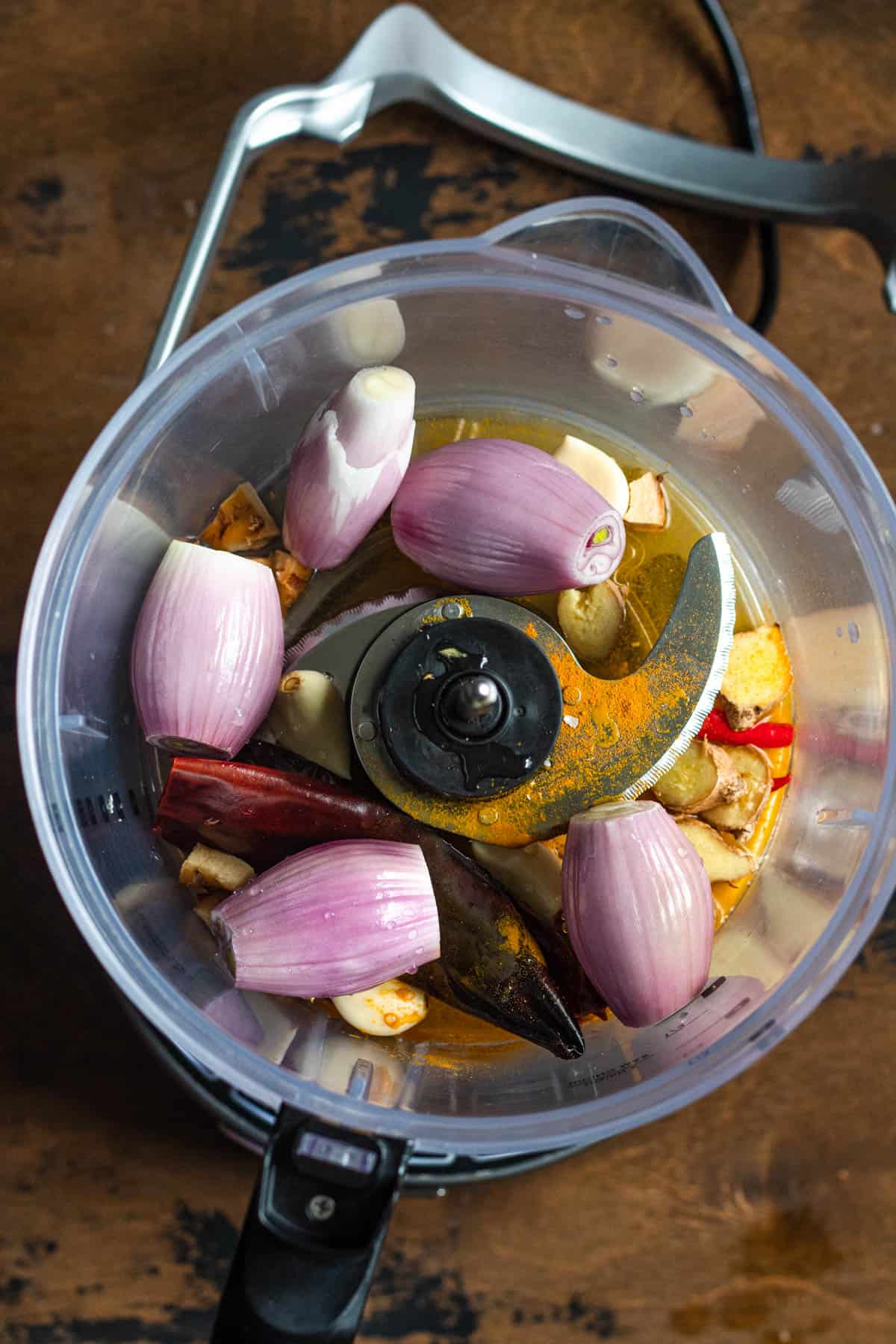
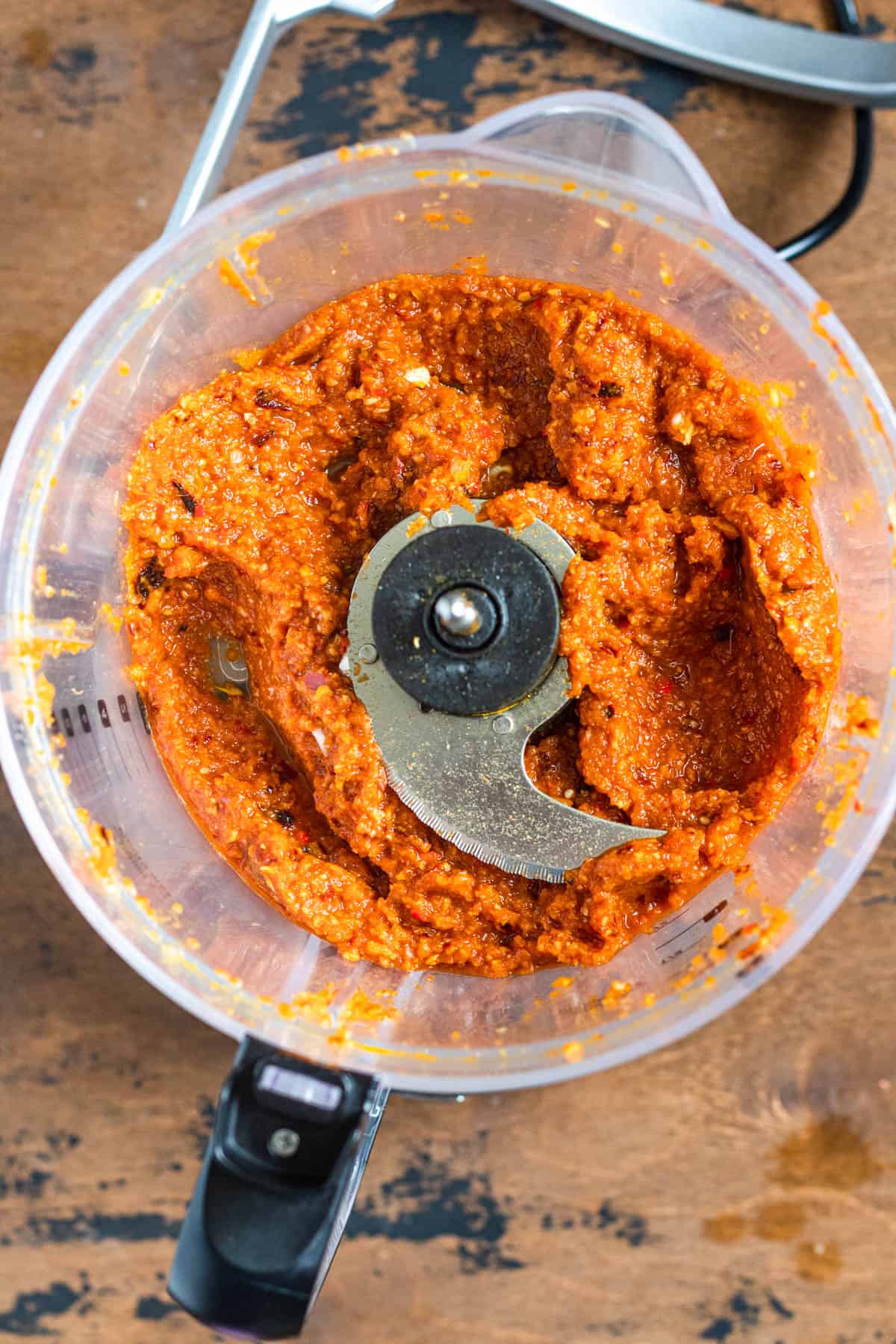
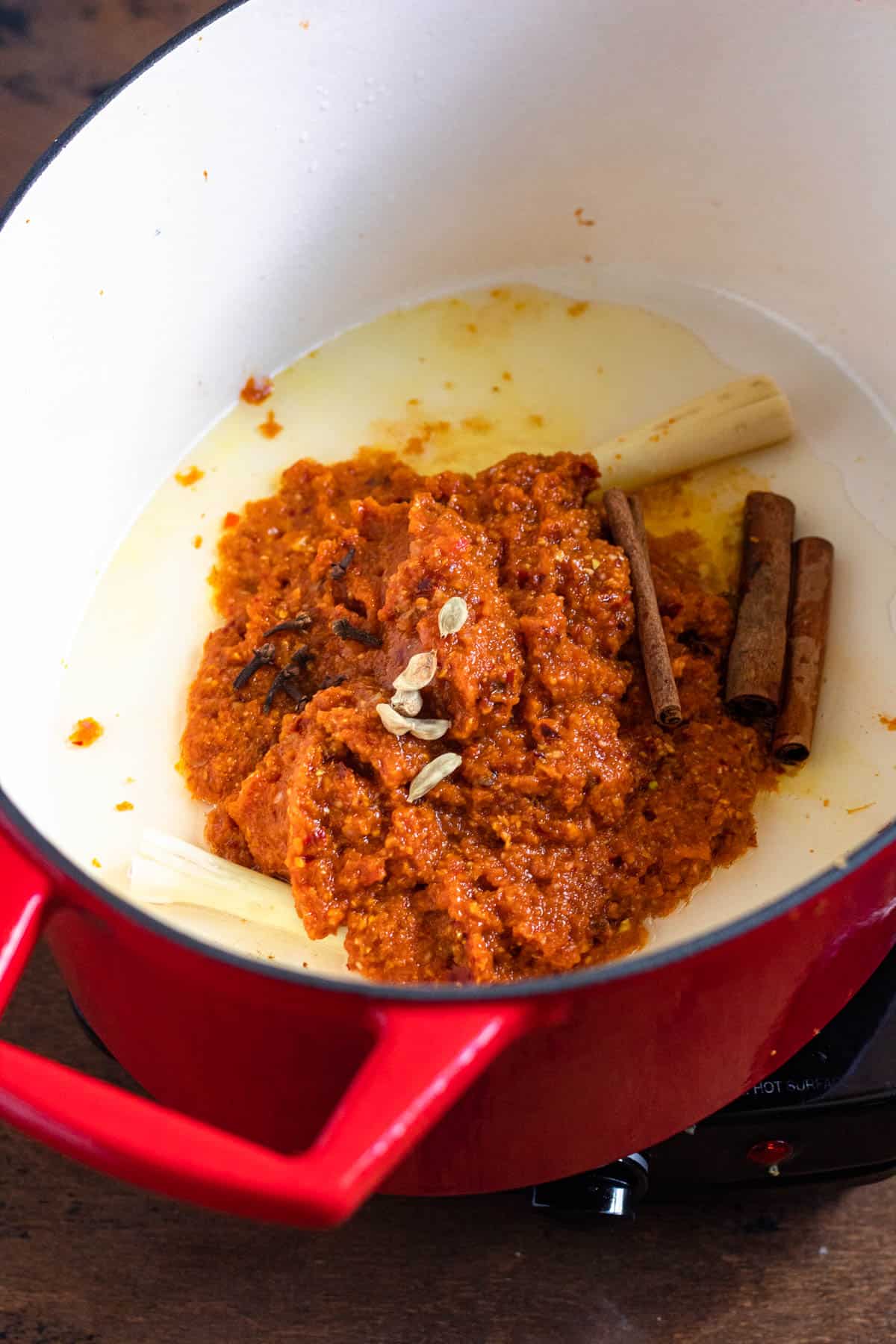
In a food processor, combine the paste ingredients. Blend them up until a paste forms.
Add the coconut oil into a dutch oven and allow it to melt.
Once the oil heats up, add the stalks of lemongrass to the oil as well as the spice paste.
Add the cardamom pods, star anise, cinnamon sticks, and cloves. Stir until the paste dries out and becomes fragrant.
Step 2: Sear the Beef
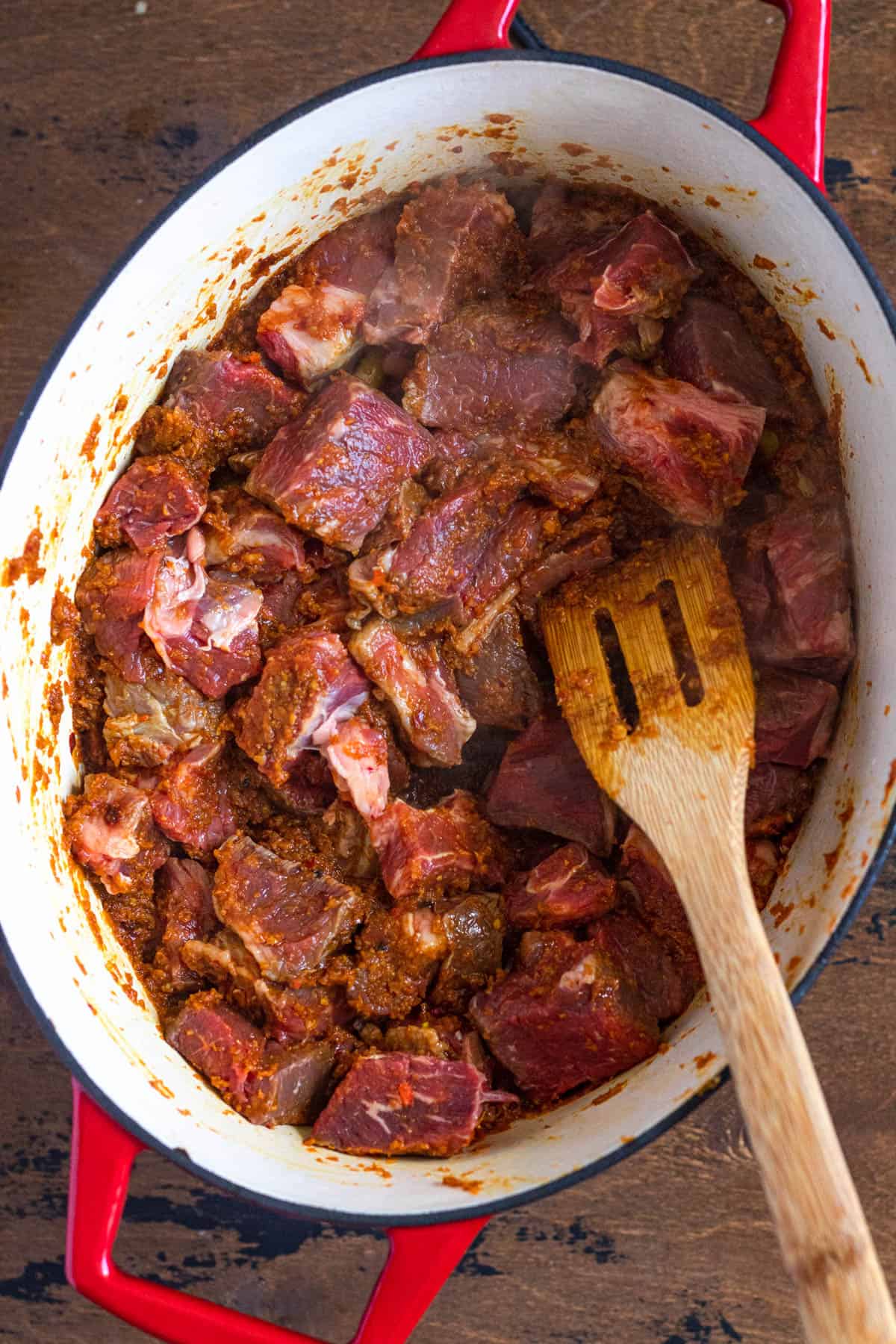
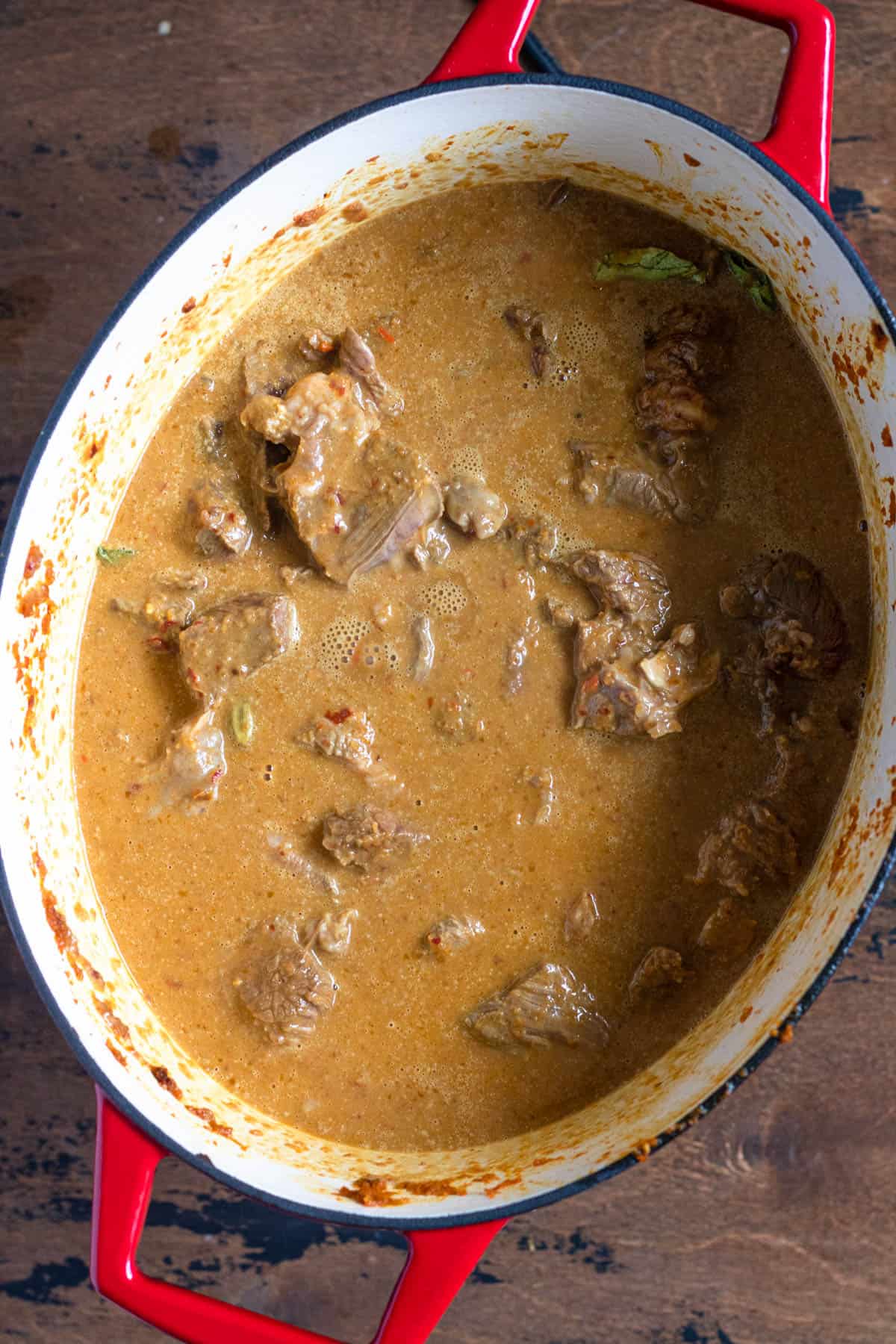
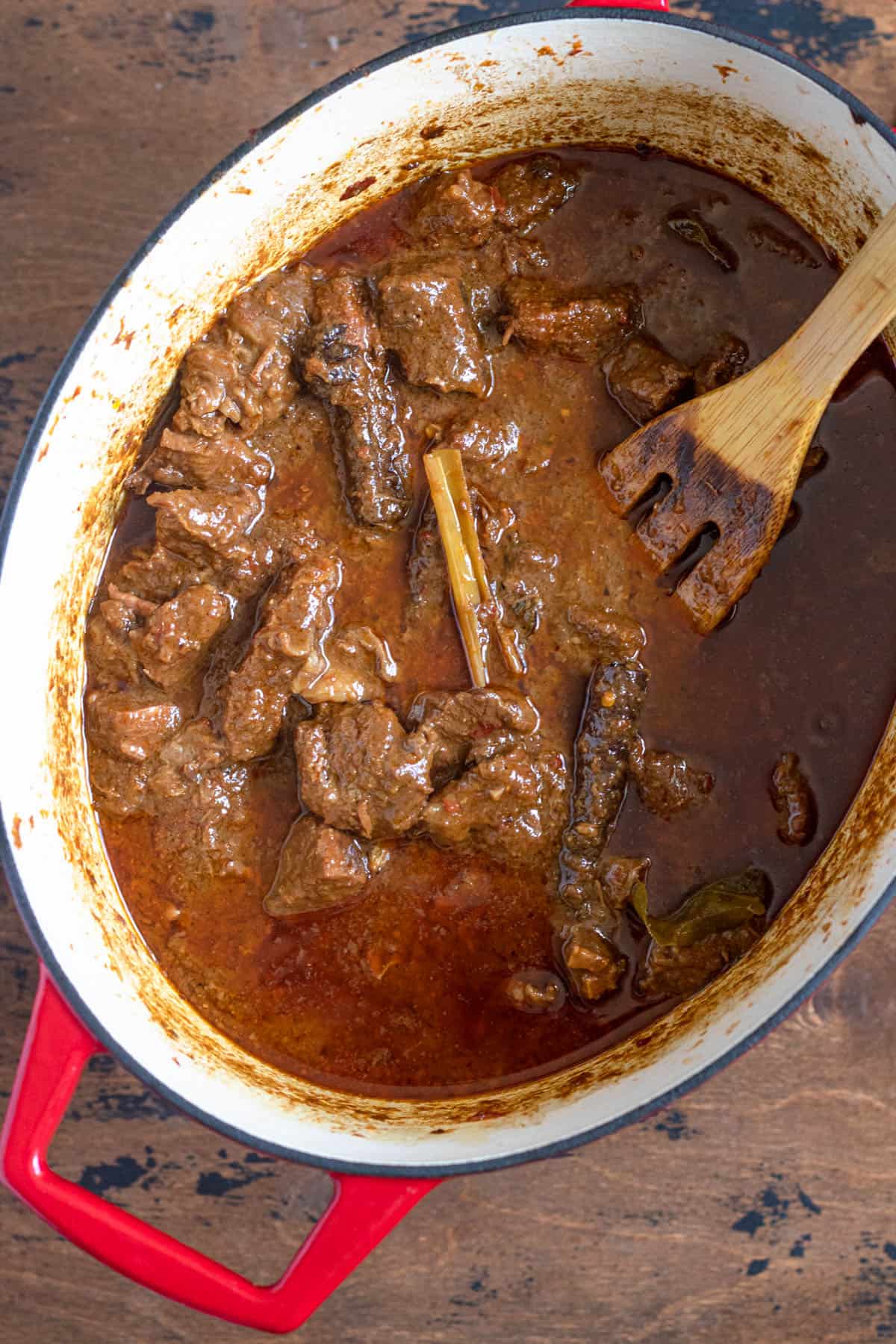
Add the beef into the pot with the paste. Saute the meat in the paste for 5-7 minutes until the outsides start to brown.
Add the coconut milk into the dutch oven and mix well, scraping up any browned spots on the bottom of the pan.
Then add the salt, coconut sugar, tamarind paste, and kaffir lime leaves.
Step 3: Slow Cook
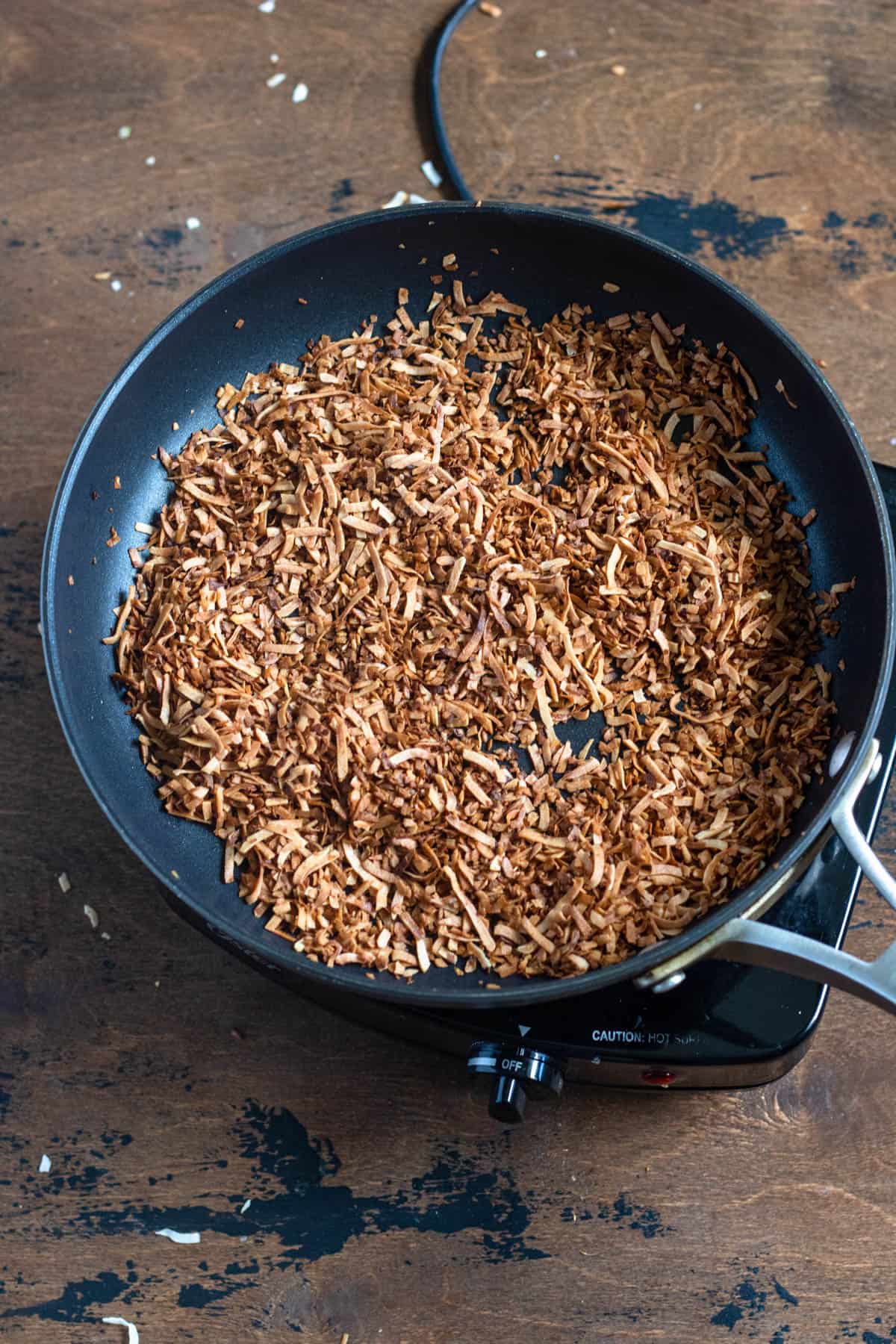
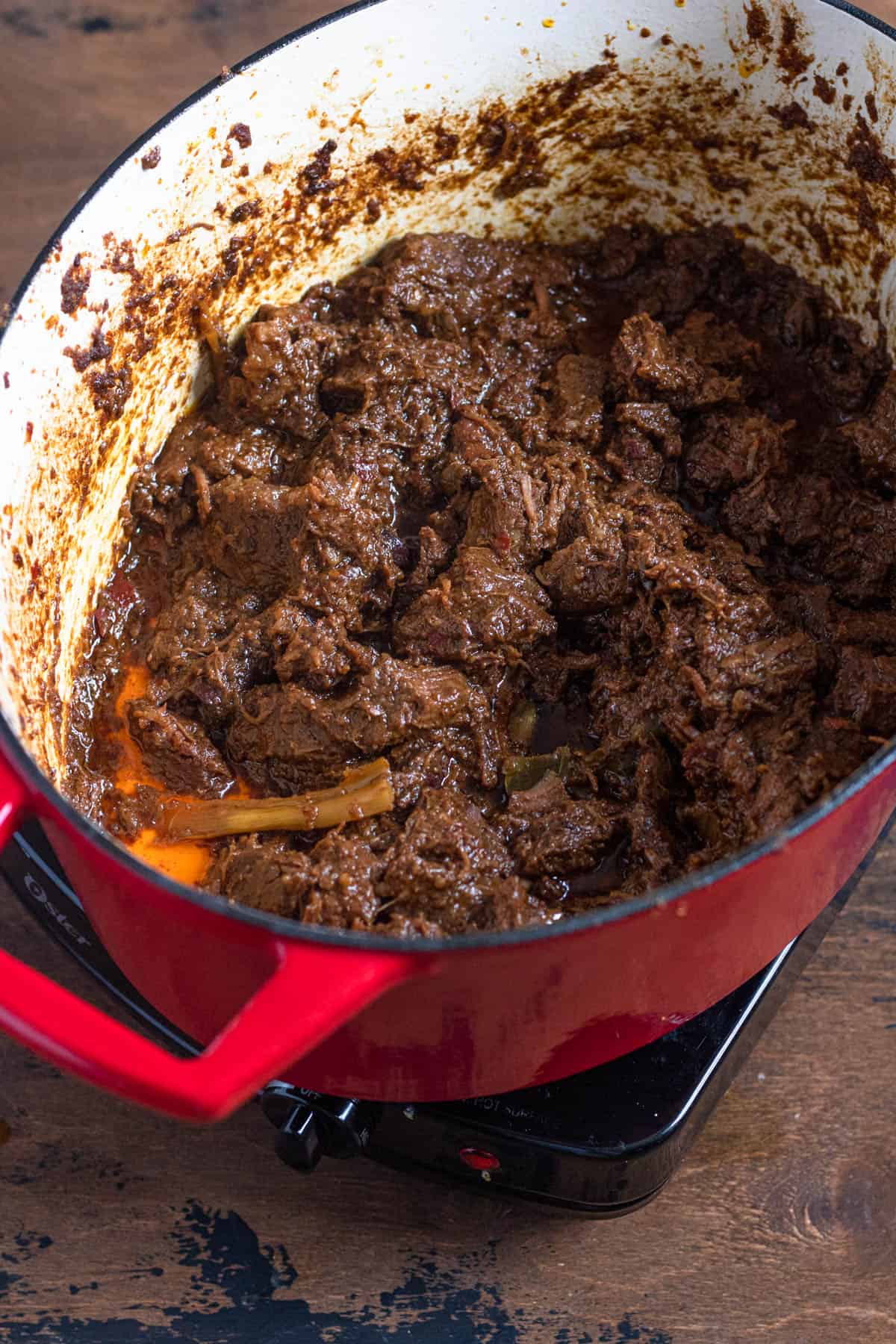
Add the lid onto the pot and turn to low heat. Leave the stew to cook for 2 hours with the lid on, stirring every 15 minutes.
After 2 hours, remove the lid and allow to cook for another 30-40 minutes with the lid off, still stirring every 15 minutes.
After 30 minutes of cooking with the lid off, add the kerisik into the pot and mix well. Continue cooking for about 30 minutes until there is not much liquid left and the beef appears dry and is a dark brown color.
Serve and enjoy!
How to Make Kerisik
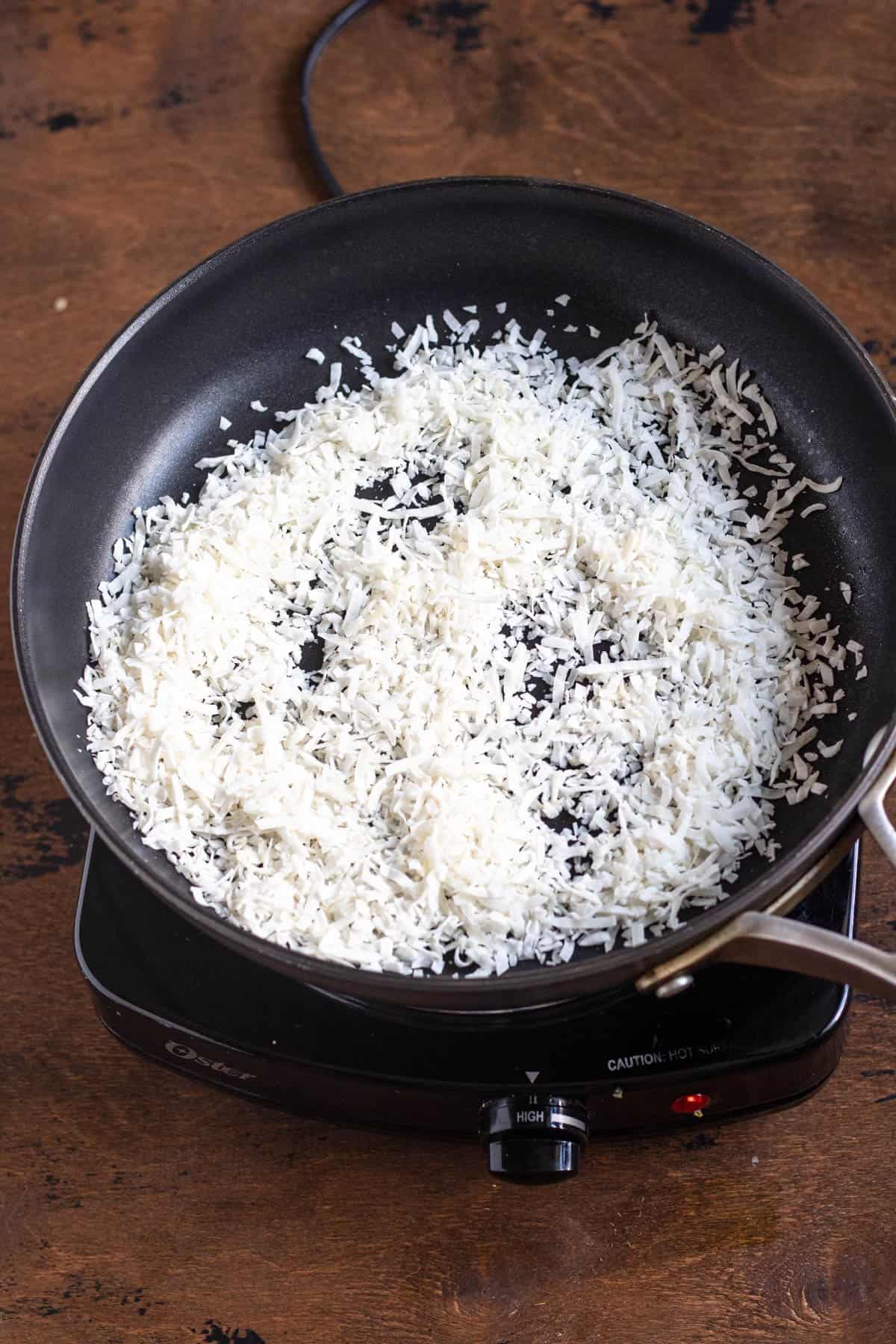
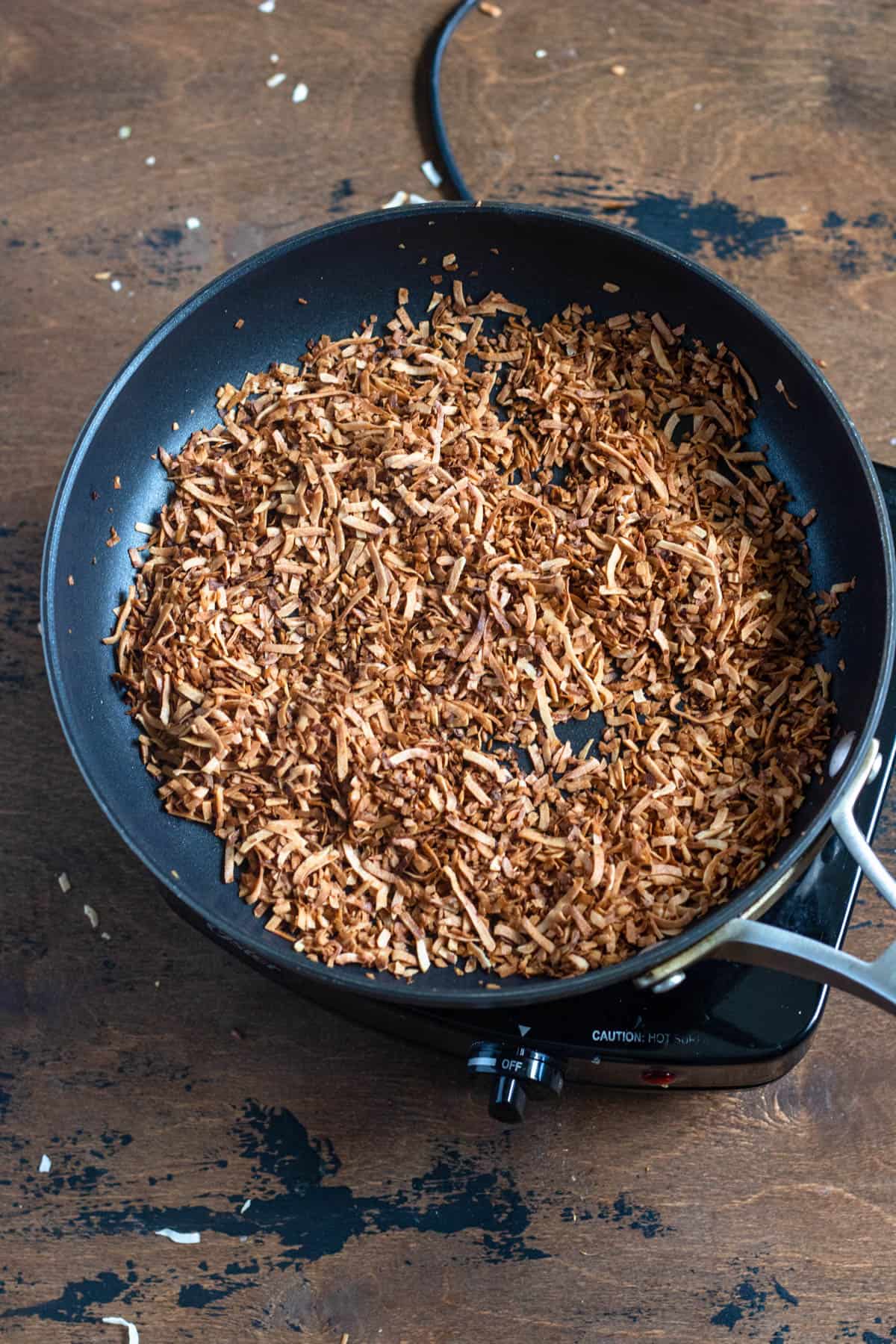
If you need to make Kerisik from scratch, follow these simple instructions:
- Add the coconut to an ungreased pan and stir over medium heat until all of the coconut is a deep, toasty brown (toast it quite a lot but make sure to take if off the burner before the coconut burns)
- Add the coconut shavings into a mortar and pestle and grind it up until a smooth paste forms.
- If you are using pre-packaged coconut, you may need to add coconut oil into the coconut near the end of the grinding process. This will turn your kersisk from coconut crumbles into a cohesive paste.
Expert Tips
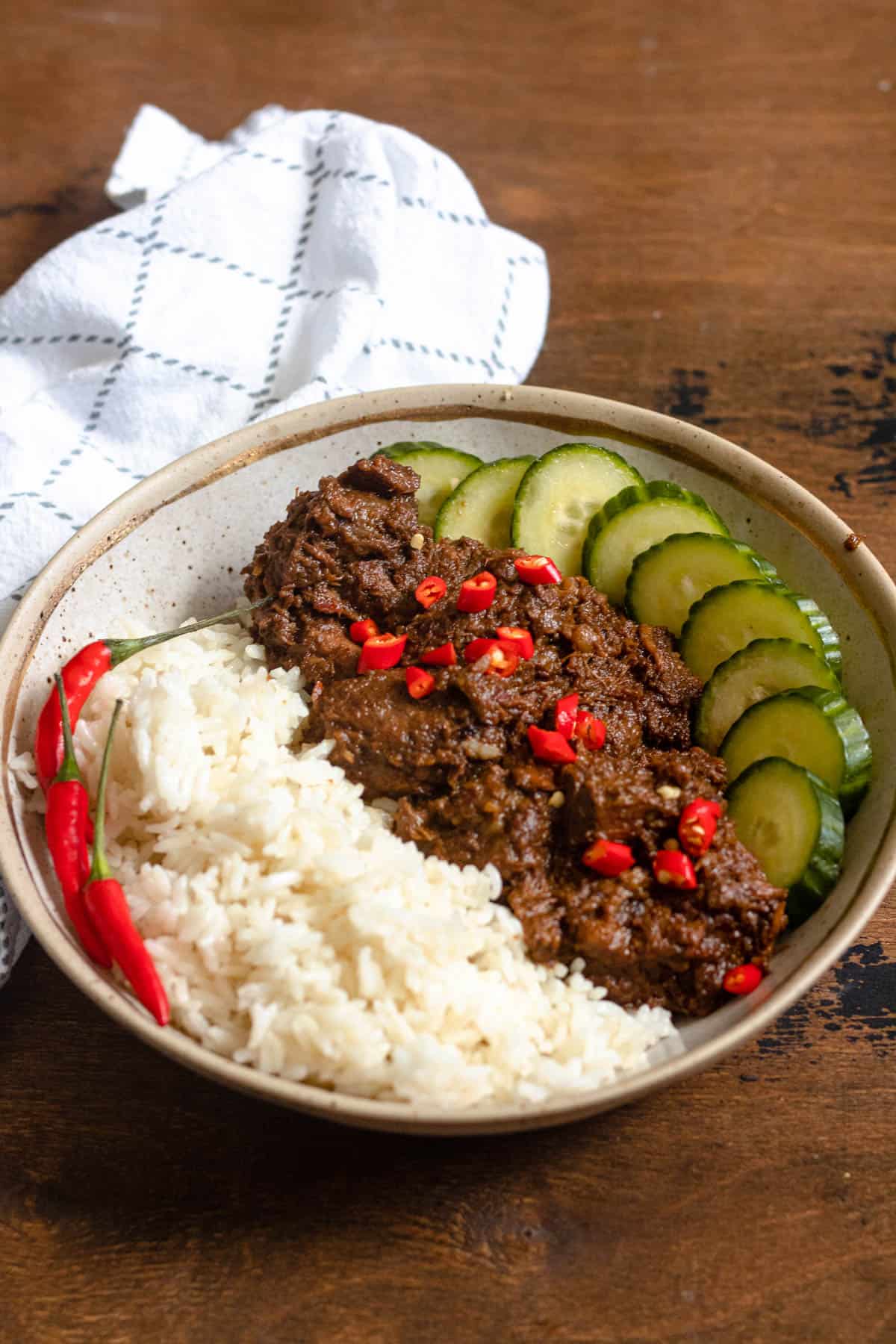
- Depending on the type of beef, coconut milk, or Kerisik, your Beef Rendang can get pretty oily. If the liquid has been absorbed but the oil separates from the dish, feel free to skim the oil off the top of the pot.
- Candlenuts are also used in this recipe (blended into the spice blend) but I could not find them. If you are using candlenuts, be careful during preparation. They are toxic if eaten raw. You can use macadamia nuts as an alternative.
- Make sure to pick out the whole spices and aromatics (lemon grass, kaffir lime leaves) before serving to ensure safe consumption.
- Recipe researched using resources from Pailin’s Kitchen, Naz it Up, Recipes are Simple, and the Culinary Institute of America (video featuring Indonesian chef).
- This recipe can also be made using chicken for a chicken rendang recipe! This version does not need to slow cook for a long time but it is also not as tender. Check out this great Instant Pot Chicken Rendang Recipe.
Recipe FAQs
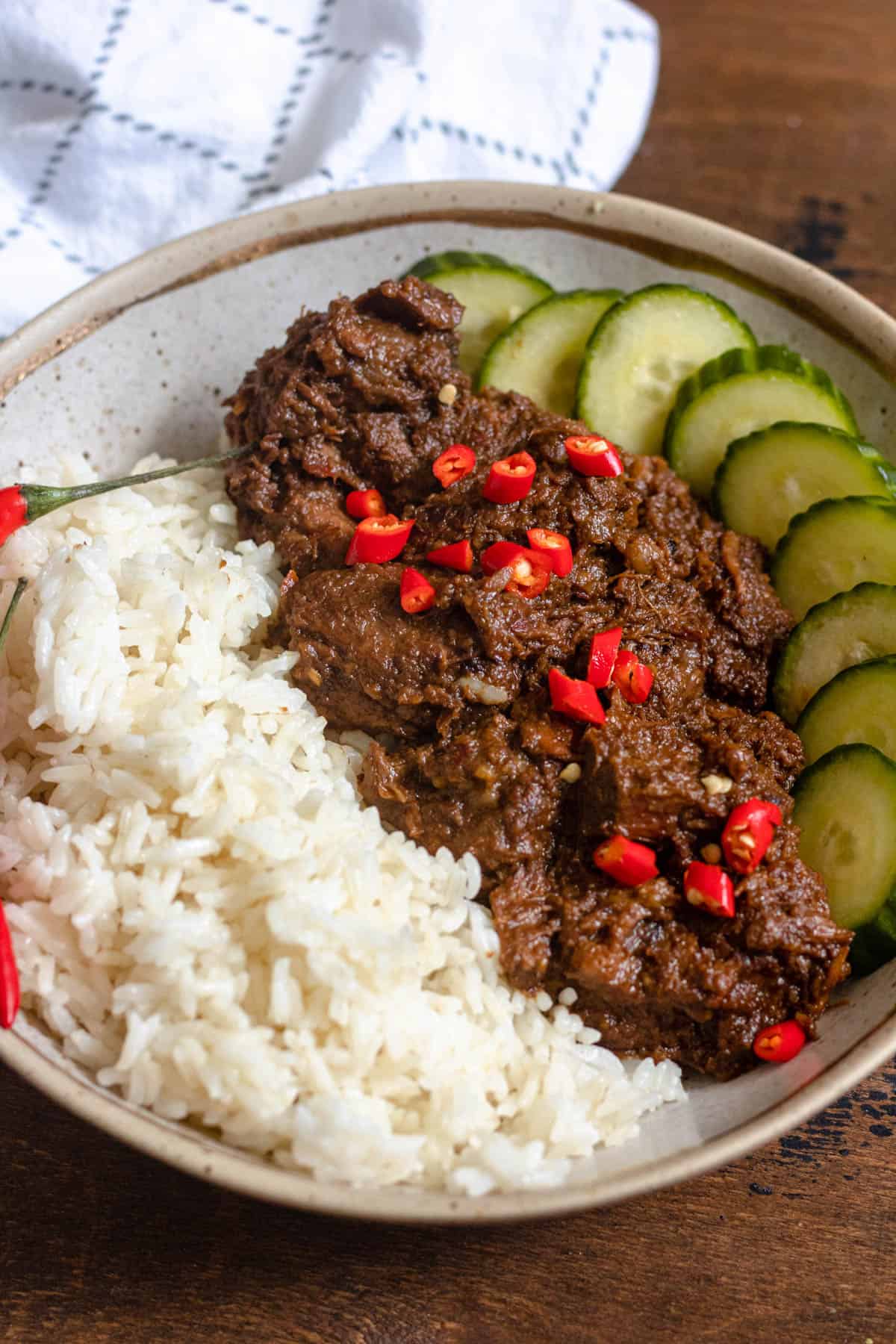
Serve your Beef Rendang with white rice on the side. You can also serve it with cucumbers for some extra freshness! Also try it with this Turmeric Rice if you are having an Indonesian banquet.
You can keep the Beef Rendang in an airtight container in the fridge for up to 5 days. You can also freeze it in an airtight container where it will stay good for several months.
Beef Rendang originated in the West Sumatra region of Indonesia, but it has spread to many of its neighboring countries. It is also popular in Malaysia now, but Indonesia is its place of origin.
There are some Beef Rendang recipes that call for using a Slow Cooker. These recipes call for cooking the meat on high for 6 hours. Make sure to crack the lid for the last few hours so that the liquid can evaporate.
Check out this recipe for Instant Pot instructions.
Did you enjoy this Authentic Beef Rendang Recipe from Indonesia? If so, make sure to check out these other recipes I picked out just for you:
- Nasi Goreng
- German Beef Rouladen and Gravy
- Seswaa from Botswana
- Beef Bourguignon from France
- Beef Bibimbap Recipe
- Ghormeh Sabzi
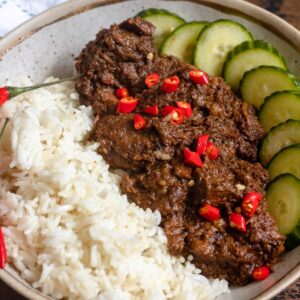
Beef Rendang
Equipment
- Food Processor
- Dutch Oven
- Pan(s)
- Oven Mitt
Ingredients
Paste Ingredients
- 2 Dried Guajillo Chiles, soaked in water
- 4 red bird’s eye chilies, red Thai peppers, deseeded (or more if you like a spicier curry)
- 1 inch ginger, sliced into rounds
- 1 inch galangal root, sliced into rounds
- ½ tsp turmeric powder
- 6 cloves garlic
- 5 shallots
- ½ cup water
Dried Spices
- 1 stalk lemongrass
- 5-6 Cardamom pods
- 1 Star anise
- 3 Cinnamon Sticks
- 8 Cloves
Beef Ingredients
- ¼ cup Coconut Oil
- 3 lb Beef Chuck, can also use beef short ribs, cut into cubes
- 2 15 oz cans Coconut milk
- 1 tsp salt
- 1 ½ tbsp coconut sugar, traditional is shaved palm sugar
- 1 tbsp Tamarind pulp, soaked in 2 tbsp of hot water to make tamarind paste
- 5 Kaffir lime leaves
- ⅓ cup Kerisik, or 1 cup shaved coconut to make it yourself
Instructions
- In a food processor, combine the paste ingredients. Blend them up until a paste forms.
- Add ¼ cup coconut oil into a dutch oven and allow it to melt.
- Once the oil heats up, add the stalks of lemongrass to the oil as well as the spice paste (in step 1).
- Add 5-6 cardamom pods, a star anise, 3 cinnamon sticks, and 8 cloves. Stir until the paste dries out.
- Add the 3 lbs beef into the pot with the paste. Saute the meat in the paste for 5-7 minutes until the outsides start to brown.
- Add the 2 (15 oz cans) coconut milk into the dutch oven and mix well, scraping up any browned spots on the bottom of the pan
- Then add 1 tsp salt, 1 ½ tbsp coconut sugar, 1 tbsp tamarind paste, and 5 kaffir lime leaves.
- Add the lid onto the pot and turn to low heat. Leave the stew to cook for 2 hours with the lid on, stirring every 15 minutes.
- After 2 hours, remove the lid and allow to cook for another 30-40 minutes with the lid off, still stirring every 15 minutes.
- After 30 minutes of cooking with the lid off, add ⅓ cup kerisik into the pot and mix well. Continue cooking for about 30 minutes until there is not much liquid left and the beef appears dry and is a dark brown color.
- Serve and enjoy!
Video
Notes
- Depending on the type of beef, coconut milk, or Kerisik, your Beef Rendang can get pretty oily. If the liquid has been absorbed but the oil separates from the dish, feel free to skim the oil off the top of the pot.
- Candlenuts are also used in this recipe (blended into the spice blend) but I could not find them. If you are using candlenuts, be careful during preparation. They are toxic if eaten raw.
- Make sure to pick out the whole spices and aromatics (lemon grass, kaffir lime leaves) before serving to ensure safe consumption.
- Recipe researched using resources from Pailin’s Kitchen, Naz it Up, Recipes are Simple, and the Culinary Institute of America (video featuring Indonesian chef).
- This recipe can also be made using chicken for a chicken rendang recipe! This version does not need to slow cook for a long time but it is also not as tender.
- Guajillo Chilies: Use dried chilies that you can cut open and have the seeds removed. I like to soak the chiles in hot water so that the flesh can soften and grind up easily. You can buy these chilies online here.
- Bird’s Eye Chilies: Some good alternatives are Red Thai Chilies and Cayenne peppers.
- Galangal Root: Galangal root looks like ginger, and tastes vaguely citrus-y. The core of mine was very tough so I cut it out. You can buy this at a local Asian grocery store.
- Turmeric Powder: You can also use fresh turmeric root if you’d prefer. Some Beef Rendang recipes even call for turmeric leaves.
- Lemongrass: Lemongrass is a great aromatic that will add a lot of flavor to your dish. If you are using fresh lemongrass stalks, follow these instructions on how to properly clean and use the ingredient.
- Beef: You can use any kind of tender beef. I chose to use beef chuck, but short ribs are also a popular choice.
- Coconut Milk: Try using high quality coconut milk. If the coconut cream has separated from the coconut water in the can, blend it together well and use both.
- Coconut Sugar: You can replace this with palm sugar or brown sugar if you cannot find coconut sugar.
- Tamarind Paste: If you cannot find tamarind paste, you can also combine tamarind pulp with water to get the same effect. You can buy Tamarind Paste online or at your local Asian market.
- Kaffir Lime Leaves: Kaffir lime leaves are used frequently in Thai and Indonesian cooking, as they deliver a strong Lime taste. These can be difficult to find in stores, but you can purchase them online easily. If you cannot find them, you can also use lime zest + lime juice to replace the flavor.
- Kerisik: Kerisik is a paste made of ground up, toasted coconut. It is difficult to find in stores and online while in America, so you will likely need to make it yourself. To do so, you will need 1 cup of ground up coconut. If using fresh coconut, that is the only ingredient you will need. If using pre-packaged shredded (unsweetened) coconut, you will also need a few teaspoons of coconut oil.
-
How to Make Kerisik
If you need to make Kerisik from scratch, follow these simple instructions:
- Add the coconut to an ungreased pan and stir over medium heat until all of the coconut is a deep, toasty brown (toast it quite a lot but make sure to take if off the burner before the coconut burns)
- Add the coconut shavings into a mortar and pestle and grind it up until a smooth paste forms.
- If you are using pre-packaged coconut, you may need to add coconut oil into the coconut near the end of the grinding process. This will turn your kersisk from coconut crumbles into a cohesive paste.







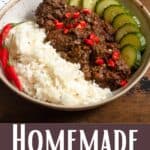

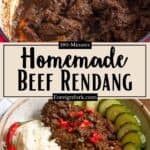
Leave a Reply